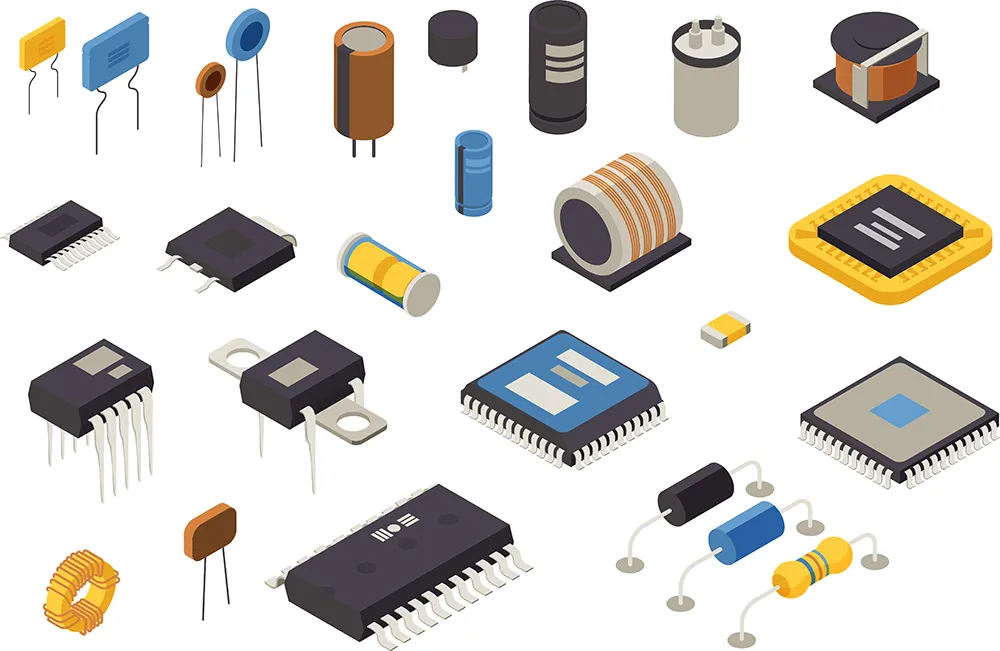In the field of electronics, every detail matters when turning an idea into a reliable, mass-producible product. At the heart of this process lies the
But a poorly prepared BOM can lead to delays, extra costs, or even project failure. So, how can you ensure your electronic BOM is complete, reliable, and compliant with industry standards?
👉 To understand how it fits into the transition from prototype to mass production, check out our article: How to Move from Prototype to Mass Production.
Let’s explore together 5 practical tips for building a robust Bill of Materials and ensuring the success of your electronic developments.
Why the Electronic BOM is Essential for Your Projects?
The electronic BOM (Bill of Materials) is far more than just a component list—it serves as the master blueprint for your product. Every resistor, microcontroller, connector, and integrated circuit is documented, along with all the critical details needed for sourcing, compliance, and traceability.
Without a well-structured BOM, the risks are numerous:
- Ordering errors leading to production delays
- Misalignment between teams (R&D, procurement, production) causing duplicates or incompatibilities.
- Scaling challenges when transitioning from prototype to mass production
On the other hand, a reliable electronic BOM enables:
- to secure the supply chain
- to reduce costs associated with errors and stockouts
- to ensure compliance with current standards and certifications
- and to streamline collaboration between departments
👉 In summary, the BOM is the backbone of any electronics project. The more precise and collaborative it is, the higher your chances of successfully scaling your product to mass production.

1. List all components comprehensively
An effective electronic BOM starts with precise inventory management. Every component—whether active, passive, or a simple connector—must be listed with the following details:
- its full name,
- its manufacturer reference,
- its role in the circuit.
This precision drastically reduces errors during ordering or future revisions.
The result: smooth production without unexpected interruptions and improved traceability throughout the product lifecycle.
👉 Discover our tips for successful industrialisation: Product industrialisation: key steps and best practices.
2. Anticipate supply and plan for alternatives
Supply is often the Achilles heel of electronic projects. To secure your supply chain:
- indicate a primary reference and alternatives for each component,
- list potential suppliers, specifying their prices and delivery times,
- Keep an eye on the end-of-life date.
This foresight limits the risks associated with shortages or sudden price increases, and ensures you have a resilient supply chain, even during periods of market tension.
3. Ensuring compliance and certifications
A Bill of Materials is not just a technical list: it is also a compliance document. It is essential to specify the following:
- regulatory certifications such as RoHS or UL,
- the origin of critical minerals (tin, tantalum, tungsten, gold), to comply with conflict-free regulations.
Beyond legal compliance, this information reinforces your company’s social responsibility and enhances the value of your products in the eyes of customers and partners.
👉 To learn more, read our article: Bill of Materials and connected objects: ensuring quality in Industry 4.0.
4. Continuously update and monitor the BOM
An electronic BOM is never static. Every change (addition, deletion, reference change) must be documented with a revision number.
At the same time, it is crucial to monitor:
- the availability of components,
- the evolution of purchase prices.
This proactive monitoring allows you to anticipate shortages and avoid additional costs. Rigorous management reduces financial risks and ensures the continuity of your projects.
5. Encourage collaboration between all teams
Finally, an electronic BOM must be accessible to all stakeholders: R&D, purchasing, production, quality. Whether it is a simple shared spreadsheet or a dedicated collaborative tool, centralising information is key to:
- avoid duplicates,
- reduce errors,
- speed up decision-making.
Seamless collaboration between teams transforms the BOM into a strategic tool, rather than just a technical list.

How to successfully industrialize your connected object?
Industrialization is a key stage in the development and production of an electronic product. In this guide, our experts have put together 16 key points to help you understand what’s at stake in this phase.



